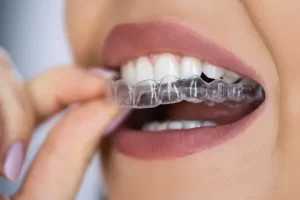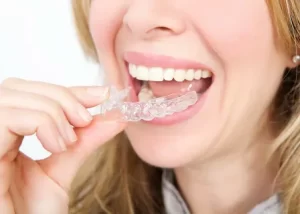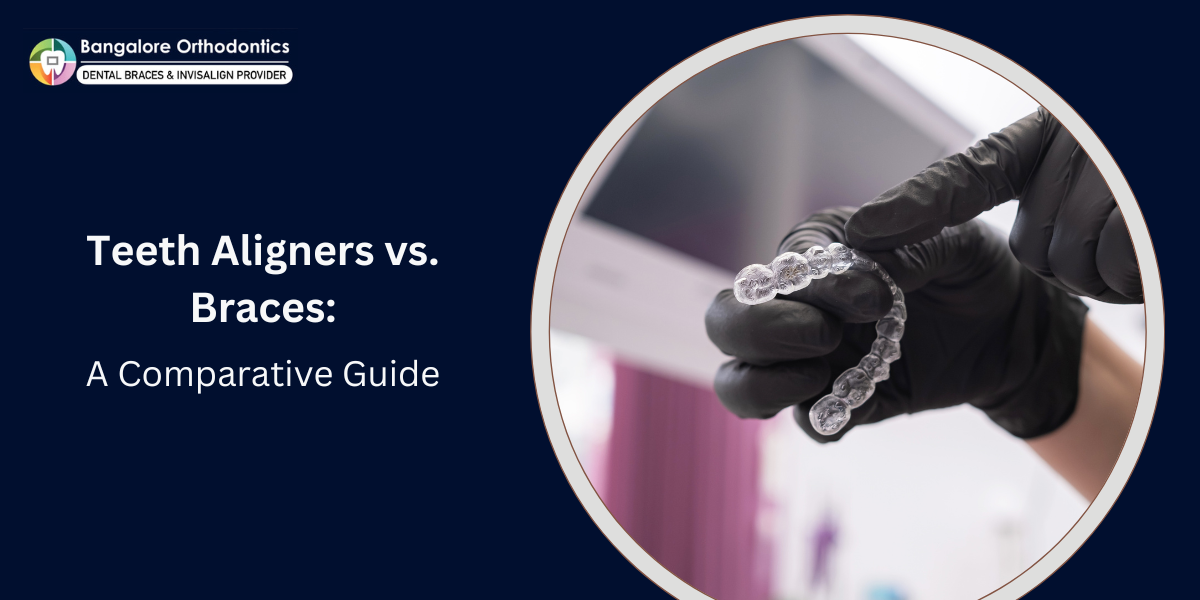If you’re looking to straighten your teeth, you’ve likely come across two options: teeth aligners and braces. It might seem unclear to figure out which one suits you best, especially if you’re new to orthodontic treatments. Aligners and braces have unique benefits, and knowing what sets them apart can help you make an informed choice. Let’s do a comparison, covering everything from comfort and aesthetics to cost and effectiveness.
Teeth Aligners: What Are They?
Teeth aligners, or clear aligners, are custom-made trays that fit over your teeth to shift them into the desired position gradually. Aligners like Invisalign are popular because they are virtually invisible, making them a top choice for those who prefer invisible teeth-straightening solutions.
Benefits of Teeth Aligners:
- Invisible Design: Clear aligners are made of transparent plastic, making them hard to detect when you smile.
- Removable: You can take them out while eating or brushing, making oral hygiene easier.
- Comfortable Fit: Teeth aligners are designed to be smooth, reducing the risk of irritation.
Teeth aligners are an excellent option for adults and teens looking for a modern, non-intrusive way to straighten their teeth.

Braces: The Traditional Option
Braces have been the go-to orthodontic treatment for decades. They use brackets and wires to exert pressure on the teeth, gradually moving them into the correct position. There are several types of braces, including metal, ceramic, and lingual braces, each with its own set of benefits.
Advantages of Braces:
- Effective for Complex Cases: Braces can handle severe misalignments and bite issues more efficiently than aligners.
- Durable: They are fixed in place, which means they are always working to shift your teeth.
- Customizable: Patients can choose colourful bands to personalize their braces.
Braces might be the better option for those with significant teeth alignment needs due to their precision and control over tooth movement.
Teeth Aligners vs. Braces: Comfort
Comfort is a crucial factor when choosing between teeth aligners and braces. Clear aligners like Invisalign are generally more comfortable because they don’t have brackets or wires that can poke or irritate the inside of your mouth. The smooth plastic trays fit snugly over your teeth, providing a seamless feel.
Braces, on the other hand, can cause discomfort, especially after adjustments. The metal brackets and wires can occasionally irritate the gums and cheeks. However, modern braces have improved in design to reduce these issues, and your orthodontist can provide wax to cover any areas causing discomfort.
Aesthetics: Show Your Smile, Not Your Braces
One of the main reasons people opt for teeth aligners is their nearly invisible appearance. Clear aligners like Invisalign allow you to straighten your teeth without drawing attention, making them a preferred choice for professionals or anyone who wants a discreet solution.
Braces are more noticeable, even when using ceramic or clear brackets. Lingual braces, attached to the back of your teeth, offer a hidden alternative but still have some visibility when you open your mouth wide. If aesthetics is your priority, aligners have the upper hand.

Treatment Duration: Faster Results with Aligners?
Depending on the case’s complexity, treatment duration can vary significantly between teeth aligners and braces. Teeth aligners often work faster for mild to moderate cases, with treatment times ranging from 6 to 18 months. This is because aligners apply consistent force, moving multiple teeth at once.
Braces are typically worn for 18 to 24 months or longer for more severe alignment issues. They provide the most precise control over tooth movement, making them the best choice for complicated dental problems. However, this precision can lead to a longer treatment duration compared to clear aligners.
Maintenance and Oral Hygiene
Keeping your teeth clean is easier with teeth aligners. Since they are removable, you can brush and floss your teeth as you normally would without any obstacles. This helps maintain good oral hygiene throughout the treatment, reducing the risk of tooth decay or gum disease.
Braces require more effort to clean. Food particles can get stuck in the brackets and wires, increasing the risk of plaque buildup. Special tools like interdental brushes and water flossers can help, but they add to the daily routine. If ease of cleaning is a priority for you, teeth aligners offer a clear advantage.
Cost Considerations
Cost is often a deciding factor when choosing between teeth aligners and braces. Aligners like Invisalign can be more expensive than traditional braces due to their technology and convenience. However, the exact cost varies depending on your case’s complexity and the treatment length.
Braces, especially metal ones, are generally more affordable. However, due to their materials and design, ceramic and lingual braces fall on the higher end of the price spectrum. It’s essential to discuss with your orthodontist the best option that fits your budget without compromising on the results.
Effectiveness: Which One Works Better?
Both teeth aligners and braces are highly effective for teeth straightening, but their effectiveness depends on the individual case. Braces are more suited for severe misalignments, complex bite issues, or when precise tooth movement is needed. They provide better control for such conditions and can handle many orthodontic challenges.
Teeth aligners work best for mild to moderate cases. They effectively align crooked teeth, close gaps, and correct mild bite issues. Clear aligners can deliver results faster and more comfortably than braces if you have a less complicated case.
Which Should You Choose: Teeth Aligners or Braces?
Choosing between teeth aligners and braces for teeth straightening depends on your needs, lifestyle, and preferences. Here’s a quick guide to help you decide:
- Choose Teeth Aligners if You want a nearly invisible treatment, have a mild to moderate alignment issue, and prefer a removable option for easier maintenance.
- Choose Braces if You have severe alignment issues, require precise tooth movement, and are looking for a more cost-effective solution.
Consulting with a specialist will help you better understand which option best suits your dental needs. For personalised guidance on choosing the right orthodontic solution, visit our experts at Bangalore Orthodontic Braces.

Final Thoughts
Both teeth aligners and braces have unique strengths that help you with teeth straightening. While aligners offer discretion and comfort, braces provide control and effectiveness for complex cases. Making an informed decision depends on understanding and discussing your needs with an experienced orthodontist.
Meet Dr Divyashree Rajendra
Dr Divyashree Rajendra is one of the leading orthodontists and a certified Invisalign provider in Bangalore. Her extensive experience and dedication to advanced orthodontic care have transformed countless smiles with teeth aligners and braces. If you’re considering teeth straightening options, Dr Divyashree and her team at Bangalore Orthodontic Braces are here to help you make the best choice for a confident, beautiful smile.

